Hydropower
Hydropower is a kind of clean, renewable, non-polluting energy with low-cost operation. It will help improve the utility resources to benefit the economy and society. Hydropower supplies about 715,000 MW or 19% of world’s electricity among the renewable energy resources that can generate electricity. It can be seen that hydropower is the most frequently used.
Compared to nuclear power, hydropower generates no nuclear waste and leaks. Unlike uranium, hydropower is a renewable energy resource.
Compared to wind power, hydropower plants are predictable, which can be easily regulated in power demand.
Compared to fossil-fueled power plants, hydropower stations take a long time to build. Unlike combustion turbines for fossil-fueled, which can be economically developed, hydropower production is limited; due to climate change Long-term energy production may be affected. Hydropower may incur additional cost to ensure availability of sufficient power in years lacking of water.
What is the hydropower?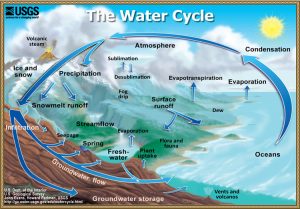
Hydropower is using water to power machinery or make electricity. Water constantly moves through a vast global cycle, evaporating from lakes and oceans, forming clouds, precipitating as rain or snow, then flowing back down to the ocean. The energy of this water cycle, which is driven by the sun, can be tapped to produce electricity or for mechanical tasks like grinding grain. Hydropower uses a fuel—water—that is not reduced or used up in the process. Because the water cycle is an endless, constantly recharging system, hydropower is considered a renewable energy.
When flowing water is captured and turned into electricity, it is called hydroelectric power or hydropower. There are several types of hydroelectric facilities; they are all powered by the kinetic energy of flowing water as it moves downstream. Turbines and generators convert the energy into electricity, which is then fed into the electrical grid to be used in homes, businesses, and by industry.
Hydropower is a renewable energy, because the water system of earth has continuous cycle. All the hydropower systems need a long-lasting and continuous flow of water sources. It is not like solar energy and wind power; it can produce electricity 24 hours per day, and has little impact on the environment.
Types of Hydropowers
The use of the runoff hydropower, called the conventional hydroelectric; use of the ocean tidal energy generation called tidal generator electricity; use of the wave energy generation called wave generator electricity; use of the remainder of pumped storage power in low load electricity system, water-generated electricity in peak load, called Pumped-storage power generation.
The conventional hydroelectric station have three types of hydropower facilities: impoundment, diversion, and pumped storage.
- Impoundment
The most common type of hydroelectric power plant is an impoundment facility. An impoundment facility, typically a large hydropower system, uses a dam to store river water in a reservoir. Water released from the reservoir flows through a turbine, spinning it, which in turn activates a generator to produce electricity. The water may be released either to meet changing electricity needs or to maintain a constant reservoir level.
2. Diversion
A diversion, sometimes called run-of-river, facility channels a portion of a river through a canal or penstock. It may not require the use of a dam.
3. Pumped Storage
Pumped storage is a method of keeping water in reserve for peak period power demands by pumping water, that has already flowed through the turbines, back up to a storage pool above the power plant, at a time when customer demand for energy is low, such as during the middle of the night. The water is then allowed to flow back through the turbine-generators at times when demand is high and a heavy load is placed on the system.
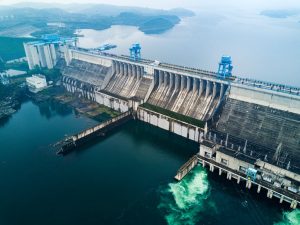
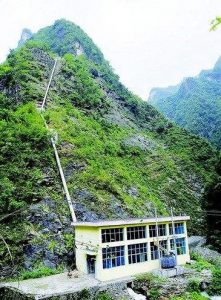
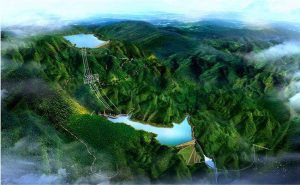
Water is an inexhaustible, precious natural resource, and the most common form is building hydropower stations.
Hydropower has the following characteristics:
- Continuous renewable water resource is used for generating electricity, which can save thermal power and nuclear power consumption of coal, oil and uranium, and other valuable non-renewable mineral resources.
- Hydropower is a clean energy source; it does not emit any harmful gases, dust or ash. It has no nuclear radiation pollution.
- Hydropower has high efficiency. Conventional hydropower efficiency is about 80%. The thermal efficiency of thermal power plants is only 30% — 50%
- Low cost of production. There is no need to purchase, transport and storage the fuel. It just needs fewer operators, higher labor productivity, simple operation, and higher operational reliability.
- Affected by natural runoff, the annual generation capacity varies in a wide range of these years.
- Hydropower station can be applied in comprehensive utilization, such as flood control, irrigation, shipping, urban rural life and mining production supply water, aquaculture, tourism and other tasks, in order to receive optimal benefits in the development of economy and society.
Advantages
a. Economics
The major advantage of hydropower is elimination of the fuel cost, immune to fossil fuels, such as oil, natural gas and coal with low construction and operating labor cost. The dam serves for multiple purposes.
b. Greenhouse gas emissions
Hydropower station does not burn fossil fuels, they do not directly produce carbon dioxide (a greenhouse gas). While some carbon dioxide is produced during manufacture and construction of the project, this is a tiny fraction of the operating emissions of equivalent fossil-fuel electricity generation.
c. Related activities
Reservoirs often provide facilities for water spots, and become tourist scenery. In some countries, using dam for irrigation can support the fish farm and water supply. A Large hydropower station can control floods, and be used for transportation.
Disadvantage
a. Damage to the environment
Hydropower projects can damage surrounding or downstream ecosystems of the plants. In some cases, dams have been demolished due to the impact on fish. It can lead to scouring of river beds and loss of riverbanks. In addition, it also has impact on birds. Since building the dam for agricultural and energy use, many native and migratory birds have become increasingly endangered.
b. Population relocation
Hydropower station has the need to relocate the native people, whose history and culture sites may be flooded and lost. Such problems have arisen in the Three Gorges project.
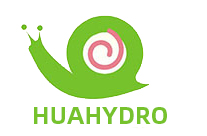



Leave a comment